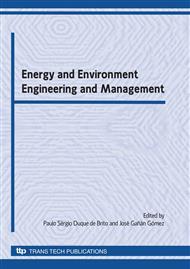p.77
p.83
p.87
p.93
p.99
p.105
p.111
p.117
p.123
Comparison of Simple Illuminance Model Performances under Clear-Sky Conditions for Athens (Greece)
Abstract:
Solar illuminance has become an important task in recent years as a new way of energy saving within the building sector. Incorporation and employ of new more efficient windows and light pipes in buildings require accurate information of external solar illuminance levels for a proper design. Unfortunately, illuminance data is not measured as often as solar radiation and therefore luminous efficacy models must be used. A large amount of these models are based on the empirical relationship existing between the components of luminous efficacy and the corresponding components of solar radiation, i.e. direct, diffuse and global. However, these relationships seem to be non-linear and site specific. In this article, the performance of five illuminance models to estimate clear-sky solar global and diffuse illuminances is analyzed. Experimental values of irradiance and illuminance have been obtained from a solar radiation station sited at the Institute of Environmental Research and Sustainable Development of the National Observatory of Athens (Athens, Greece). Results have shown that illuminance models based on solar geometry variables alone seem to exhibit a noted locality. Inclusion of radiometric variables is thus needed to improve illuminance estimation. This characteristic is noted for both diffuse and global components.
Info:
Periodical:
Pages:
99-103
Citation:
Online since:
April 2010
Authors:
Keywords:
Price:
Сopyright:
© 2010 Trans Tech Publications Ltd. All Rights Reserved
Share:
Citation:


